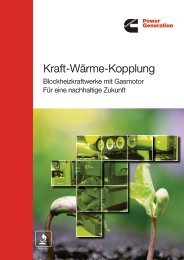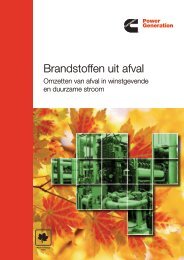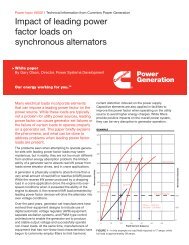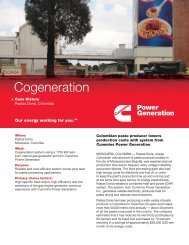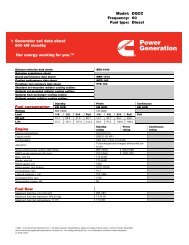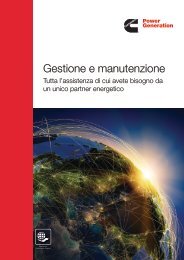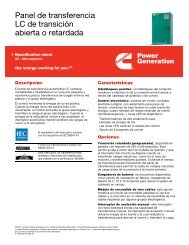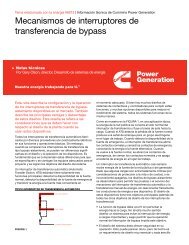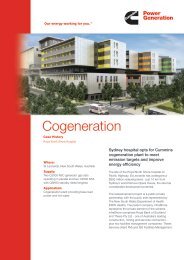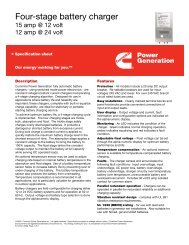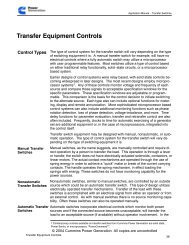appendix
appendix
appendix
You also want an ePaper? Increase the reach of your titles
YUMPU automatically turns print PDFs into web optimized ePapers that Google loves.
APPENDIX G<br />
Application Manual – Liquid Cooled Generator Sets<br />
Fault<br />
A fault is any unintended flow of current outside its intended circuit path in an electrical<br />
system.<br />
Field<br />
The generator field (rotor) consists of a multi–pole electromagnet which induces output<br />
voltage in the armature coils (stator) of the generator when it is rotated by the engine.<br />
The field is energized by DC supplied by the exciter.<br />
Flicker<br />
A term describing visible brightening and dimming of lights caused by a voltage surge or<br />
oscillation.<br />
Free Field (Noise Measurements)<br />
In noise measurements, a free field is a field in a homogeneous, isotropic medium (a<br />
medium having the quality of transmitting sound equally in all directions) which is free of<br />
boundaries. In practice, it is a field in which the effects of the boundaries are negligible in<br />
the region of interest. In the free field, the sound pressure level decreases 6 dB each<br />
doubling of the distance from a point source.<br />
Frequency<br />
Frequency is the number of complete cycles per unit of time of any periodically varying<br />
quantity, such as alternating voltage or current. It is usually expressed as (Hz) Hertz or<br />
CPS (cycles per second).<br />
Frequency Regulation<br />
Frequency regulation is a measure that states the difference between no–load and<br />
full–load frequency as a percentage of full–load frequency.<br />
Generator<br />
A generator is a machine which converts rotating mechanical energy into electrical<br />
energy. See AC generator.<br />
GFP (Ground Fault Protection)<br />
A ground fault protection system is a system designed to limit the damage to equipment<br />
from line–to–ground fault currents.<br />
Governor<br />
A governor is a device on the engine which controls fuel to maintain a constant engine<br />
speed under various load conditions. The governor must have provision for adjusting<br />
speed (generator frequency) and speed droop (no load to full load).<br />
Ground<br />
A ground is a connection, either intentional or accidental, between an electrical circuit and<br />
the earth or some conducting body serving in place of the earth.<br />
Grounding<br />
Grounding is the intentional connection of the electrical system or the electrical<br />
equipment (enclosures, conduit, frames etc.) to earth.<br />
Grounded Neutral<br />
A grounded neutral is the intentionally grounded center point of a Y–connected, four–wire<br />
generator, or the mid–winding point of a single phase generator.<br />
Ground Return<br />
Ground return is a method of ground fault detection that employs a single sensor (CT)<br />
encircling the main bonding jumper between the power system neutral and ground. This<br />
device in itself is not capable of locating the faulted circuit but when used in conjunction<br />
with ground fault sensors on all feeders and source connections, can provide bus fault<br />
protection when properly coordinated (delayed).<br />
Rev. Jan 2011<br />
G–5



